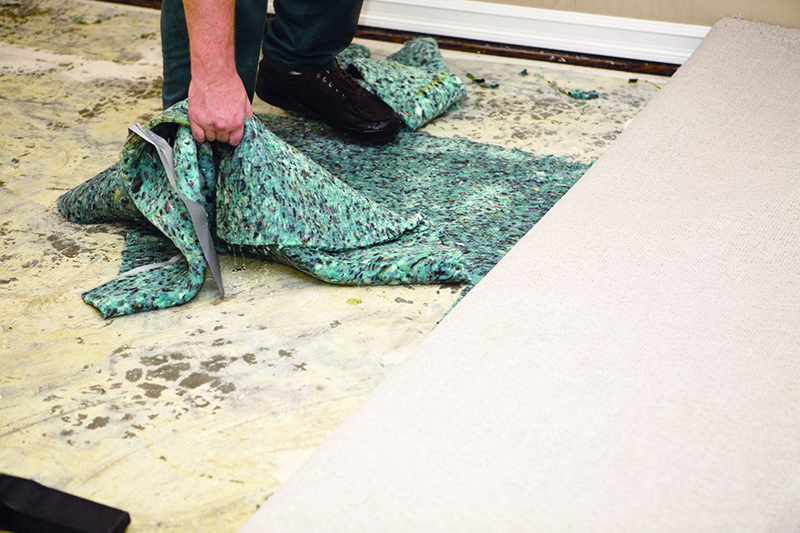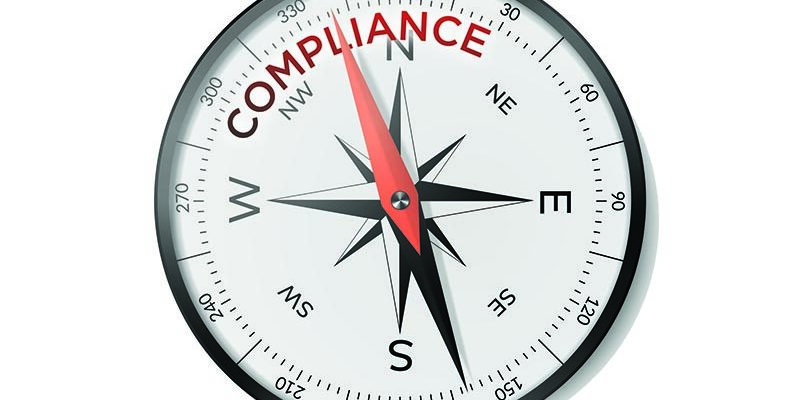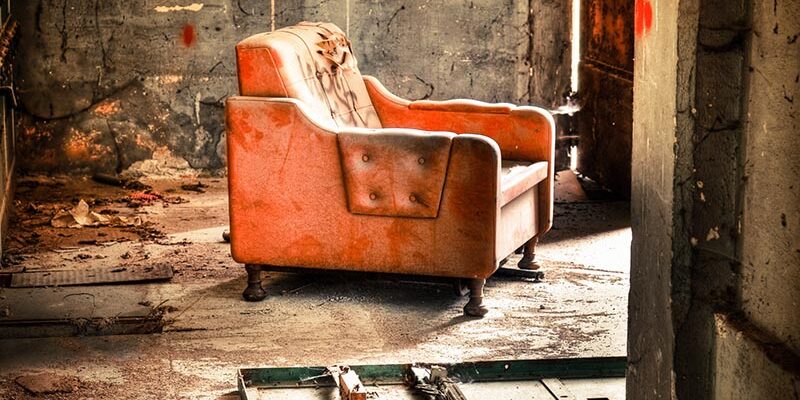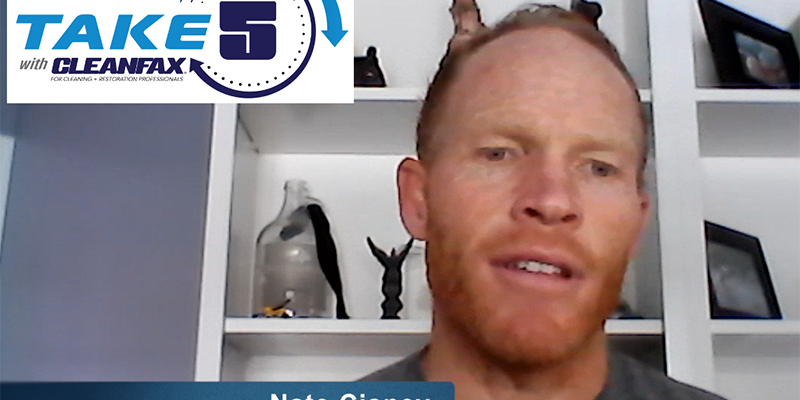Water Damage Mishaps

By Amy Hughes, editorial assistant
As restoration companies gear up for water damage jobs, it’s important to consider what training or operating procedures in your company may need to be refreshed or reinforced to ensure your staff, along with your equipment, is in tip-top shape. We asked five industry experts to share the most common on-the-job mistakes they see water damage restoration technicians making.
What water damage restoration mistakes do you see most often from technicians and/or companies?
The common mistakes our experts pointed to tended to highlight a need for some back-to-basics refreshers on water damage restoration procedures and priorities. Richard Driscoll, IICRC master restorer and approved instructor, says the mistakes often begin with the inspection. He points out that without a “thorough investigation of the site, including where the water has gone, what materials have been affected, and proper moisture/atmosphere readings,” technicians don’t have the information they need to address the loss. This leads to other mistakes early in the job.
David Oakes, IICRC master restorer and approved instructor, commonly sees technicians who fail to install enough air movement on day one of the project. “The ANSI/IICRC S500 Standard for Professional Water Damage Restoration, 5th Addition 2021 includes a formula that clearly defines the minimum amount of air movers to achieve a fast rate of evaporation,” he notes, so technicians should be sure to review and follow the standard guidelines. Barry Costa, managing partner/educator for Costa Group Education LLC, also points to the importance of following the S500 and ensuring technicians understand the definitions of all terms used in the standard. He explains that as manufacturers have begun developing smaller and lighter equipment for ease of use, the newer equipment may not offer the same drying power as the heavier duty models. Restorers must take all this into account when calculating the equipment needs of a project. Jessika James, IICRC-approved instructor with LearnToRestore.com, agrees, noting that improper equipment calculations in the initial stages can lead to longer drying times and secondary damages.
Bruce DeLoatch, IICRC master restorer and approved instructor, says his chief concern is a “lack of safety training and attention to health and safety.” He points out that OSHA guidelines are there for our protection on the job. However, restoration professionals sometimes have a habit of “viewing OSHA as the enemy or thinking, ‘It won’t happen to me.’” Restoration work can be hazardous, which is why DeLoatch recommends the IICRC HST course, which teaches health and safety to cleaning and restoration professionals. “I strongly urge company owners to enroll all workers in the course and to make safety the number one priority on all projects,” DeLoatch says.
What is one thing you most wish technicians would stop doing?
Oakes and Driscoll agree that a big problem in the industry is demolition and removal of salvageable materials. Technicians often assume that materials like tile, grout, and subfloor are contaminated without conducting a thorough inspection or considering whether the material can be cleaned, dried, and disinfected. Oakes asserts that “the floor will tell you if the floor needs to be removed: loose tiles, hollow sounding tile, buckled floors, damaged grout, etc.”
Driscoll agrees, noting that “We still have too many restoration companies and technicians whose first course of action is to grab the crowbar and start demolition—rather than investigating the loss first, then evaluating the drying options, and then doing demo if needed.” Oakes adds, “Anyone can remove wet materials; it takes a true professional to dry material in place.”
And speaking of being a true professional, Costa sees too many technicians performing services without proper training and professional certification. “We have so many companies that go into water damage and they might get their education on forums. Well, the problem with getting it only on a forum is the person giving information has not necessarily been vetted for their expertise,” Costa explains. This is not to say that all information on forums is bad, but an untrained technician will not be able to discern accurate from inaccurate information. “You need formal training to be in this industry,” Costa asserts, “and it doesn’t stop at WRT [Certification]. You need to continue your training.”
What do you wish more restoration technicians knew?
Several of our experts pointed again to safety concerns among the things they want more techs to know. Driscoll highlighted proper use of PPE, noting that he still sees technicians in the field using a respirator over a full beard, which can’t achieve a proper seal to keep the wearer safe from contaminants.
James suggests that more techs should know how to perform a proper hazard assessment and use the Hierarchy of Hazard Controls to reduce or eliminate hazards. “Jobsite safety is so important for workers, occupants, insurance related staff, and subcontractors, yet it is often overlooked or ignored by some restoration contractors and technicians,” James explains. DeLoatch adds that technicians need to be aware of the long-term health effects of the work they do and take proper precautions now. “You are going to age,” he explains. “You will need your lungs, back, knees, and hearing when you get older. What you do now will dramatically affect the length and quality of your life.”
Oakes and Driscoll also note that a true understanding of psychrometry and the science of drying is often lacking in the industry. To dry structures effectively and efficiently, technicians must understand how to balance humidity, airflow, and temperature, and how to manage the changing balance throughout the drying cycle. Thoroughly assessing a water loss, calculating the equipment needs, addressing hazards, and properly disinfecting a jobsite all require an in-depth knowledge of the science behind cleaning and drying materials.
Costa wishes more technicians recognized the larger significance of their jobs in not just physically drying a building, but in bringing their clients’ lives back in order. He explains that especially for homeowners, “This is one of the worst things that’s happened to them in the most expensive thing they’ve ever purchased—their home. And they’re worried about their kids, the soccer game coming up, they have family coming this weekend—and they now have a swimming pool that they didn’t pay for within their home. So, when we go in, we have to heal two losses: the physical loss and the emotional loss.”
Costa also highlights the importance of the Restoration Industry Association and the advocacy work they do on behalf of the industry. Dealing with the insurance side of restoration and getting the work paid for can be difficult, and the RIA is serving as a voice for the industry to represent the best interests of restoration professionals in creating new policy and improving communications. Costa encourages all restoration contractors to join the organization and stay educated on the advocacy work of the RIA.
Final thoughts
As our industry experts point out, restoration is simultaneously a highly technical and highly emotional field. It can be physically demanding and hazardous, and technicians must care for the physical health and safety of themselves and their clients.
At the same time, the job can be emotionally demanding with technicians servicing clients on some of their worst days, when they may be dealing with unthinkable losses. In these moments, what your staff has to offer is a supportive, professional demeanor paralleled by the technical expertise that will allow them to restore clients’ homes and businesses as quickly and efficiently as possible. Before you send your techs out into the field this season, take the advice of our industry experts and address these common mistakes. Spend some time reviewing and reinforcing the training, procedures, safety precautions, and core values you expect to be reflected on every job and in every interaction with a client.
Amy Hughes is an editorial assistant with Cleanfax. She has worked as a freelance writer and editor for more than ten years, including four years with Cleanfax. Reach out to her at [email protected].












